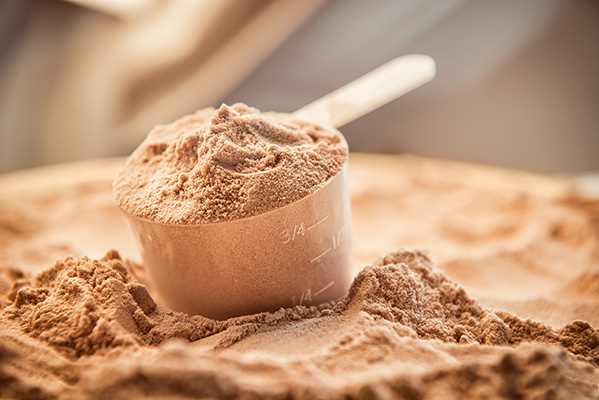When you hear the word protein, you probably think about eggs, steak, chicken and fish. With the new year bringing new health and fitness resolutions, many people are adding protein powder to their daily regimen. But with so many choices, how do you know which one to choose? Let’s discuss what you should be looking for on the nutrition facts label to help those muscles grow.
PROTEIN BASICS
Protein is comprised of amino acids that are bound together to make up a larger structure, and they serve very important functions in the body. The word protein comes from the Greek word proteus, meaning first. Protein is essential to maintain life, as it is involved in all the body’s cellular processes.
Here are some facts:
- There are 20 different amino acids.
- Of those, there are nine amino acids that our bodies cannot make on their own, and these are known as “essential” amino acids, or EAAs. These are: valine, isoleucine, leucine, methionine, phenylalanine, tryptophan, threonine, histidine and lysine. We must get these from food or supplements.
- The rest are considered “non-essential” because our bodies can make them.
WHAT ARE THE MOST IMPORTANT INGREDIENTS IN MY PROTEIN POWDER?
If your goal is muscle gain, here is the quick rundown. We want those nine essential amino acids listed above.
However, protein content in the powder is measured by the amount of nitrogen present, and it is shown in grams of protein on the label. Some companies use less important “filler” amino acids like glycine, arginine, taurine and citrulline, just to name a few, which may boost the protein content of the powder (due to the nitrogen content of them) but do not promote muscle growth. Remember, we can make these on our own. This is known as “amino spiking” and demonstrates why it is so important to understand what is on the label.
Amino spiking allows supplement companies to make a cheaper product and charge you for protein or “nitrogen” content. If you are going to pay for a protein powder, you want the good stuff.
There is a subcategory of amino acids called branch chain amino acids (BCAA), and these are the real MVPs, as they are known to have a special role in boosting muscle growth. They are called “branched chain” due to the structure of the molecule itself. The three BCAA’s are leucine, isoleucine and valine.
To have the maximum benefit from your protein powder, look for a ratio that looks like this: 2:1:1 (leucine: isoleucine: valine). This will give you a high leucine content, which has been shown to be the main driver of muscle growth.
WHAT IF I’M AN ATHLETE?
There is a quality-assurance program called Informed Sport that tests nutritional supplements for banned substances. This is denoted with a checkmark logo with the word “informed.” This means you can be sure that what’s on the label is what’s in the product.
WHAT ELSE SHOULD I LOOK FOR?
Other things to consider on the nutrition-facts label would be total calories, carbohydrates and added sugar and fat content. Other minerals, such as potassium, may not be appropriate for those with certain diseases, such as kidney disease. Remember to speak with your doctor or a registered dietitian to determine which supplements and exercise and diet regimens are right for you.



